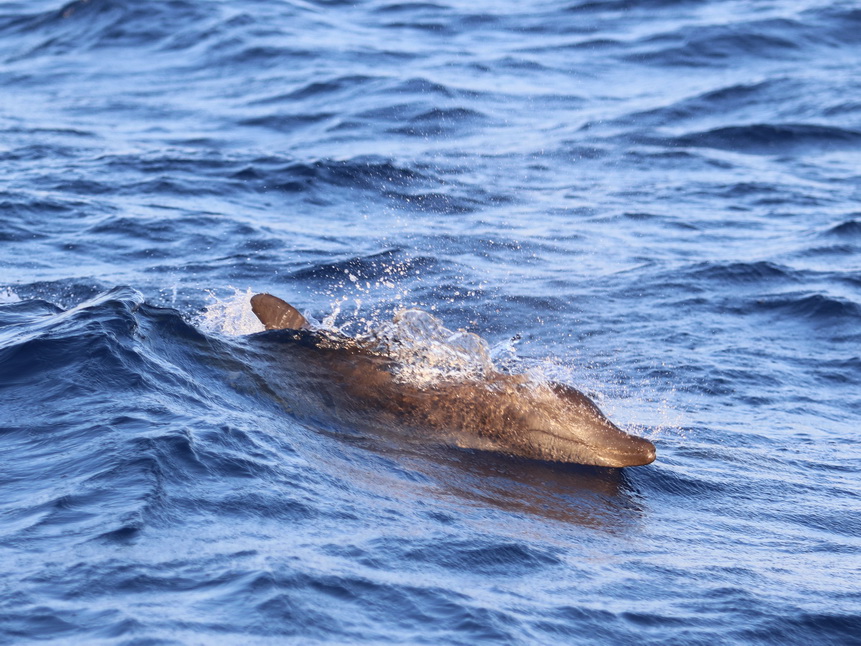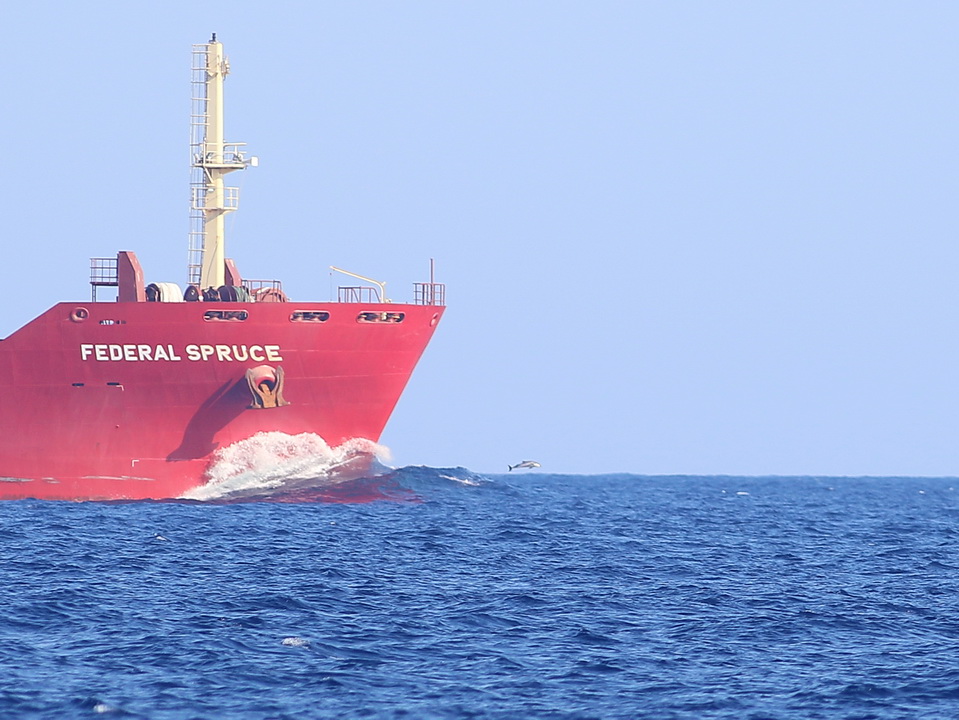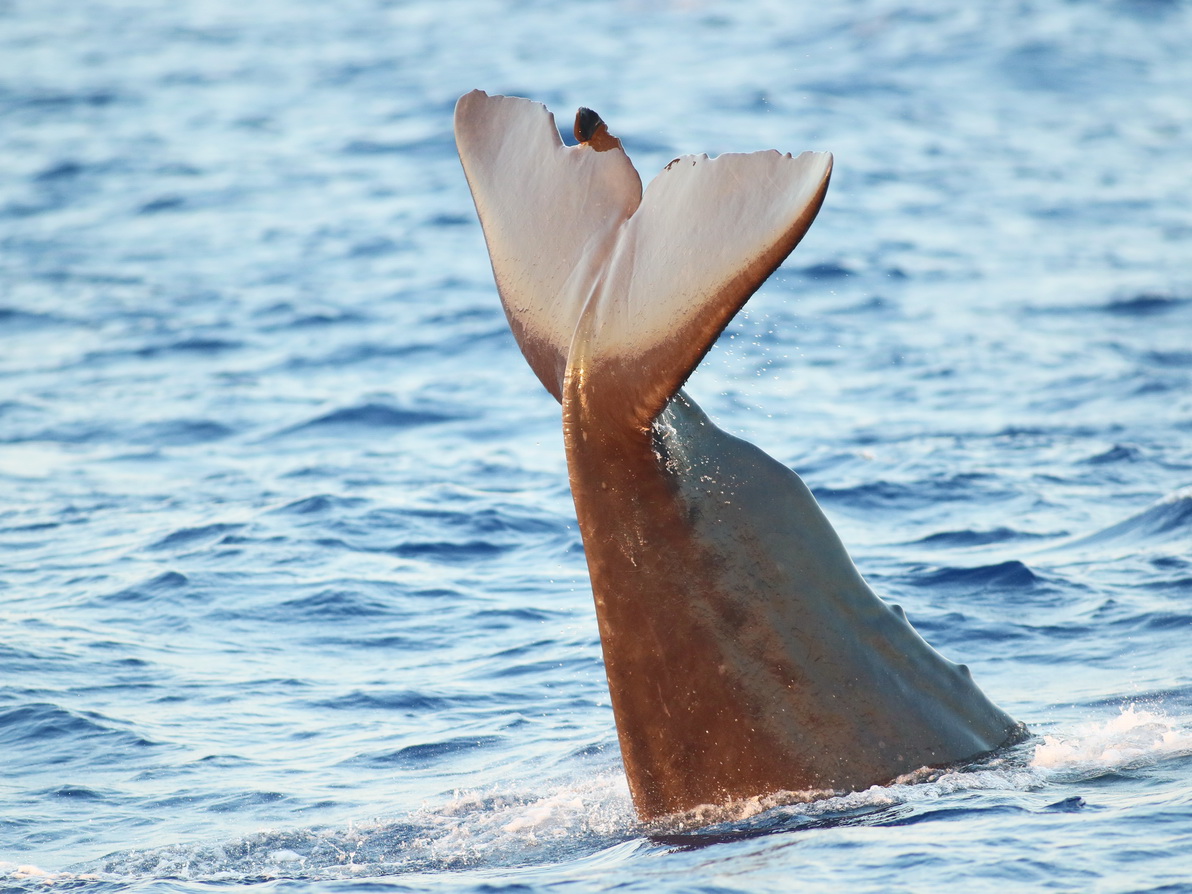Long time friend and partner of MCR – SOTW team, Alexandros Frantzis, writes from on board SOTW in the Hellenic Trench about his concerns, hopes and optimism for the deep divers of the Hellenic Trench

Once more sailing along the Hellenic Trench; once more sailing with our good friends and colleagues of MCR, in order to study whales and dolphins. However, this time it is very special: we are covering pelagic waters of the Hellenic Trench in the framework of a huge international effort made by hundreds of scientists and people dedicated in the conservation of cetaceans. All these people, coming from many different nations and many different fields have joined forces to serve the goal of setting a baseline of abundance for all cetacean species in the Mediterranean and Black Sea. This is ASI, the ACCOBAMS Survey Initiative; an idea that was put on the table some 20 years ago, just after the birth of this important Agreement and now, close to completion, is the immense task of surveying, by both air and sea, the entire Mediterranean Sea.
Just a few hours ago, while sailing south of Crete, we passed close to Gavdos island, the southern edge of Europe and were so happy to sight some bottlenose dolphins. A bottlenose dolphin sighting is probably nothing so exciting in the life of a cetologist, but we have first recorded this “extreme” population unit in 1998 and had a few sightings until 2000. Then we had never again surveyed the Gavdos Plateau during the expeditions of Pelagos Cetacean Research Institute, so it is a very nice feeling to confirm that this dolphin population unit is still present in its habitat. This is not anymore given for all cetacean species and all population units in the Mediterranean Sea.
Our survey here, along the Hellenic Trench, has as its target a group of species, the so called “deep-divers”: the sperm whales and the Cuvier’s beaked whales that are the world champions in diving to the abyss at 2000 or even 3000 meters, in search of their prey: the meso- and bathypelagic squids. The Hellenic Trench is the core area of their habitat in the Eastern Mediterranean basin. This is why since 2017 the Hellenic Trench has been designated as an IMMA (globally Important Marine Mammal Area). This is also why since its early years, ACCOBAMS proposed the Hellenic Trench to become a MPA for cetaceans. Only last year just two small pieces of it became part of the NATURA 2000 Network, but this seems too little to us, if we wish these amazing animals to go on living at our doorstep, just a couple of kilometers away from the Greek coasts.
At least five military exercises using sonar have taken place along the Hellenic Trench since 1996 resulting in the death of at least 45 Cuvier’s beaked whales. Seismic surveys have also started here during the last decade, creating occasionally a noise nightmare for cetaceans that already suffer constantly from ship noise due to the heavy marine traffic.

The floating rubbish and plastic that we are documenting throughout the ASI survey are often swallowed by deep-diving whale species along the Hellenic Trench, mistakenly taken as squids as they sink to great depths. About 60% of the stomach contents of sperm whales, beaked whales and Risso’s dolphins that were analyzed in Greece were found to contain large plastic items! One young sperm whale died because of plastic ingestion, having in its stomach more than 100 of plastic items. Stuff we are using daily: plastic wrapping of ice tea cans, biscuits, construction materials, plastic bags from souvlaki restaurants, garbage plastic bags, plastic fishing nets…, all things originating from our plastic civilization were found in the stomach of that whale!
However, the most significant threat by far for the sperm whales of the Hellenic Trench is ship strikes. Throughout this survey are seeing cargo ships, RO-RO ferries, tankers and all kinds of large vessels moving fast along the 1000 m contour of the Hellenic Trench, which coincides with the peak of sperm whale density along here. At least one sperm whale strands every year in Greece with clear propeller scars on its body. Probably many more are hit, but their carcasses never reach the coast. Considering that the total number of sperm whales using the Hellenic Trench is no more than 250, their loss due to ship strikes is likely unsustainable. This is sad, but from another point of view it gives some hope, because it could become a positive conservation paradigm. Since we recognized and studied the problem, it became clear that its solution is much easier than what we might have thought.
IFAW have seen the importance of this conservation issue and have kindly contributed funding to both this survey and our efforts to scientifically document a solution to the problem and convince the Greek authorities to move fast forward before it’s too late for these sperm whales. The study that was recently completed by IFAW and PELAGOS Cetacean Research Institute showed that if the ship traffic is sent some 10 km further offshore along the Hellenic Trench that will dramatically reduce the ship strike risk. In that case the delay of large vessels crossing the area will be on average only 10 minutes for trips lasting 2 or more days.
What is needed now is that the Greek decision-makers, the Ministry of Merchandile Marine and Island Policy officially submit the proposal to IMO (International Maritime Organization) next February. After two decades of efforts for the sperm whales of the Hellenic Trench, we are finally close to creating a positive example of conservation success, but we will keep “fighting” until the sperm whales feel the difference.
During the first night’s dinner, before starting this survey, I shared with all members of the crew my wish-list regarding the sightings we would make along the Hellenic Trench. First in my list was a dolphin species that I adore. This species has been observed only once in the middle of the Ionian Sea between Greece and Italy. I wanted to see rough-toothed dolphins much closer to the Greek coasts this time, to confirm the presence of a population unit of this elusive species in the Ionian Sea. The chance of observing them during this survey was probably less than one in a thousand, but it happened during the very first day of the survey! I am so happy about it!
I don’t know what are the chances in succeeding to conserve the Mediterranean’s whales and dolphins, but I am certain that if we really want this to happen, this will come true against all odds. There are many dedicated good people out there, with good will, with knowledge and scientific tools and above all with a strong wish to preserve our environment, our unique home that still looks like a paradise in the open seas.

Sorry, comments are closed for this post.